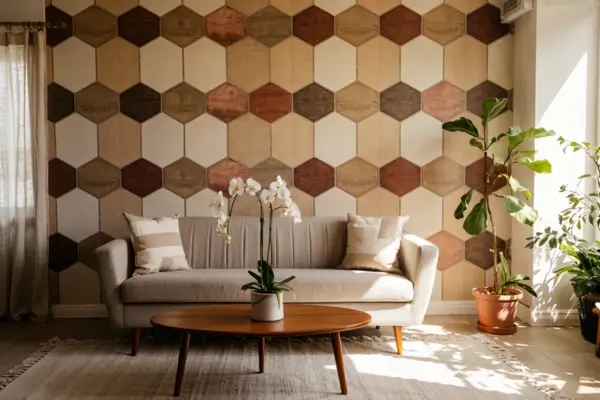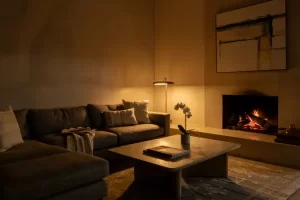Wallpaper has made a major comeback in the world of interior design—and for good reason. With endless patterns, textures, and colors to choose from, wallpaper offers a creative way to transform your space without the need for major renovations. Whether you’re trying to add depth to a small room, inject personality into a plain wall, or create a dramatic focal point, the right wallpaper can completely shift the energy of your interior. Best of all, it’s accessible, renter-friendly, and surprisingly easy to apply.
This article will guide you through the many ways you can use wallpaper to style your home with flair and intention. We’ll explore how different types of wallpaper affect the mood of a space, techniques for strategic placement, and design tips to help you choose patterns that reflect your personality. If you’re looking for a budget-friendly way to refresh your space with style and character, this guide is for you.
The Versatility of Wallpaper in Interior Design
Wallpaper isn’t just about flowers and stripes anymore. Today’s options range from abstract art to metallic finishes, botanical prints, and even realistic textures like marble, wood, or brick. Modern wallpaper can mimic architectural elements, create illusions of depth, or simply bring a burst of color to a dull space. This versatility makes wallpaper one of the most powerful tools for achieving high-impact results with low-effort changes.
Why Choose Wallpaper Over Paint?
While paint remains a classic choice, wallpaper offers a visual texture and detail that paint simply can’t replicate. With wallpaper, you can achieve intricate designs without having to hand-paint them or invest in expensive art. It also offers more variety in finish—matte, glossy, textured, or even fabric-based wallpapers can dramatically alter how light interacts with a space. For those who want something unique and expressive, wallpaper is often the better option.
Types of Wallpaper to Consider
From traditional paste wallpapers to peel-and-stick varieties, there’s something for everyone. Peel-and-stick is particularly useful for renters or those hesitant about commitment. Vinyl wallpapers are durable and ideal for high-moisture areas like kitchens or bathrooms. Grasscloth and fabric wallpapers bring a luxurious, tactile feel to bedrooms and living rooms. Choosing the right type depends on your lifestyle, aesthetic goals, and the function of the room.
Where to Use Wallpaper for Maximum Impact
You don’t have to cover every wall to make a statement. Strategic placement can turn wallpaper into a powerful design element. Consider accent walls, nooks, ceilings, or even furniture fronts. These unexpected touches often become the most memorable features of a room and allow for more adventurous pattern choices without overwhelming the space.
Accent Walls That Wow
An accent wall behind a bed, sofa, or dining table can immediately define a room’s style. This is especially useful in open floor plans or multipurpose spaces. Choose bold patterns or textures to highlight the area and draw focus without disrupting the overall harmony of your decor.
Unexpected Areas to Wallpaper
Try wallpapering the inside of bookcases, the backs of shelves, or closet doors for subtle surprises. A patterned wallpaper on the ceiling can add drama and height, especially in powder rooms or bedrooms. Even hallways and stairwells—typically overlooked spaces—can benefit from a patterned backdrop to guide the eye and create flow.
Choosing the Right Wallpaper Pattern and Color
Picking the perfect wallpaper involves more than just choosing a pretty pattern. You need to consider the room’s size, natural lighting, and existing decor. Large patterns can overwhelm small spaces, while subtle prints might get lost in larger rooms. The color palette should complement your furniture and accessories, creating harmony and cohesion in the space.
Patterns That Enhance Room Dimensions
Vertical stripes can make ceilings appear higher, while horizontal patterns expand narrow rooms. Geometric prints can add energy and structure, whereas floral or organic patterns soften the space. Use these design tricks to visually reshape a room and enhance its overall feel.
Color Psychology in Wallpaper
Warm tones like terracotta, mustard, and blush create a cozy ambiance, perfect for bedrooms and living rooms. Cool hues like sage, navy, and dove gray bring calmness and elegance, ideal for home offices or bathrooms. Bold colors like emerald or black can make a dramatic statement when used on an accent wall or in smaller doses.
Tips for Installing Wallpaper Like a Pro
Installing wallpaper doesn’t have to be intimidating. With the right preparation and tools, even beginners can achieve professional-looking results. Whether you’re using peel-and-stick or traditional wallpaper, patience and precision are key.
Surface Preparation
Make sure walls are clean, smooth, and dry before applying wallpaper. Fill any holes or cracks and sand down rough patches. A wallpaper primer may help the paper adhere better and protect the wall underneath, especially if you plan to remove it later.
Measuring and Cutting
Measure twice, cut once. Accurate measurements ensure you don’t waste paper and that patterns align perfectly. Always cut a little extra length for trimming at the edges, especially around windows, outlets, or baseboards.
Applying and Smoothing
Start from a straight edge—usually a corner or doorway. Use a level to keep lines even. Peel-and-stick wallpapers are easier for beginners, while traditional wallpaper may require a helper to manage paste and placement. Use a smoothing tool to eliminate air bubbles and creases for a clean finish.
Maintenance and Longevity
Modern wallpapers are designed to last, but a little care can extend their life even further. Avoid direct sunlight on delicate prints, clean gently with a damp cloth, and avoid harsh chemicals. If you want flexibility, consider removable wallpaper that can be changed as your tastes evolve.
When to Refresh or Replace
If your wallpaper starts to peel, fade, or no longer suits your style, don’t hesitate to switch things up. Wallpaper is meant to be expressive, so treat it as a rotating feature that evolves with your life and creativity. Replacing wallpaper can be done selectively—start with one wall or section and grow from there.
Conclusion: Reinvent Your Space with Wallpaper
Wallpaper is more than a decorative layer—it’s a design solution that brings style, personality, and transformation to your home. Whether you prefer bold graphics, subtle textures, or nature-inspired motifs, there’s a wallpaper to reflect your vision. Without the need for renovations, it allows you to experiment, express, and evolve your space over time.
From accent walls to unexpected corners, wallpaper proves that impactful design doesn’t require a big budget or drastic changes. By understanding how to choose and apply it effectively, you’ll open the door to endless possibilities for creating a home that truly feels like yours.




